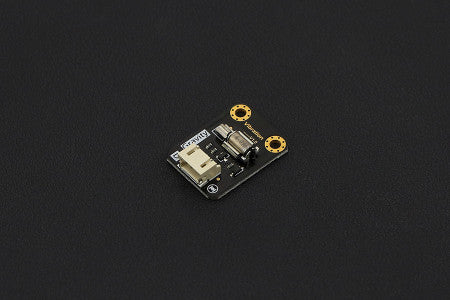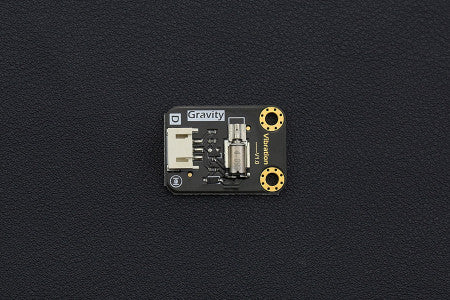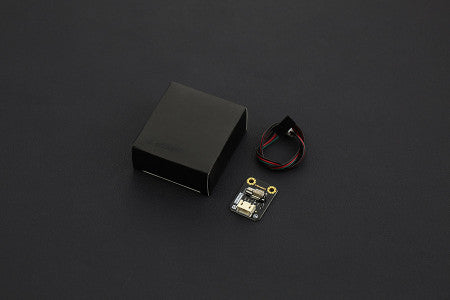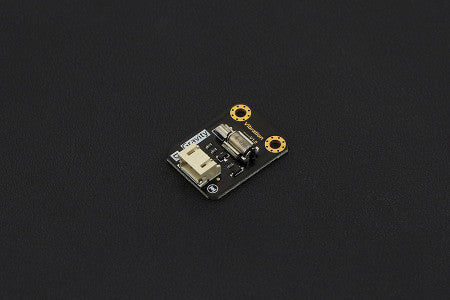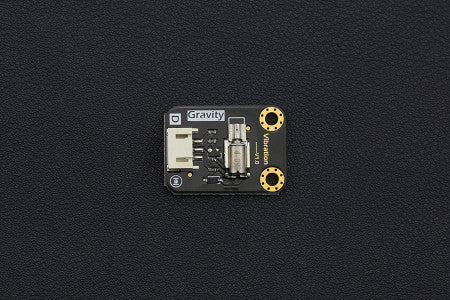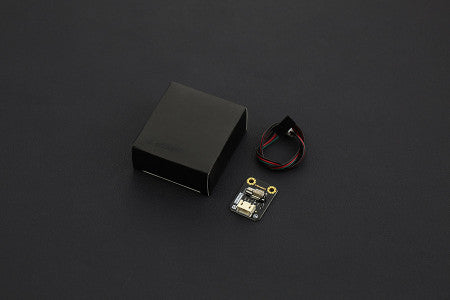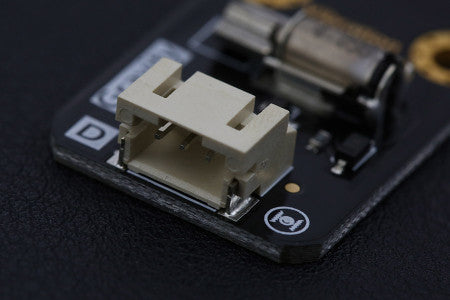Vibration Motor Module For Arduino Gravity - Have you ever wondered how to implement a vibration motor in your project, like you would find in a mobile phone? The latest vibration module in the DFRobot "Gravity" series will give you in-depth understanding of the principles of vibration motors. This module uses a high quality vibration motor that is the size of a coin. With this little vibration motor module, you can make some interesting Arduino projects such as an alarm, a notifier or even a vibrating robot!
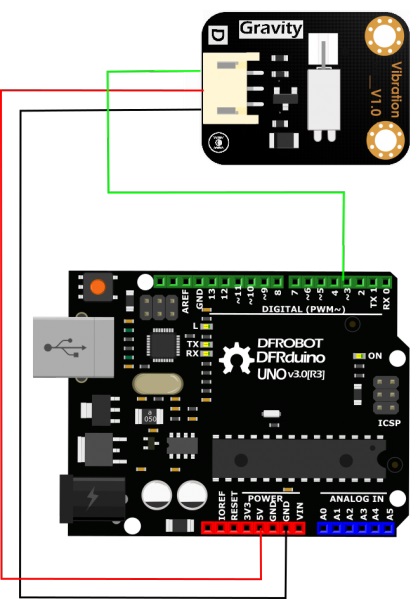
To make this sensor accessible to users of all backgrounds, a three pin Gravity interface is connected to allow plug and play usage with a range of Arduino microcontrollers. The I/O sensor shield is also a useful accessory and will allow you to connect directly to your Arduino. This sensor can also work at 3.3V levels which makes it compatible with Raspberry Pi, Intel Edison, Joule and Curie.
Frequently Asked Questions about Vibration Motor Module ForArduino Gravity
Q1: What is an Arduino Gravity vibration motor module?
An Arduino Gravity vibration motor module is a tiny electrical part that may be linked to an Arduino board to produce vibrations. It is made out of a tiny electric motor that rotates a weighted offset to produce vibrations. The module may be set to regulate the vibrations' strength and duration.
Q2: What's the process of a vibration motor module?
A vibration motor module produces vibrations by transforming electrical energy into mechanical energy. It has a tiny electric motor inside that rotates an off-balance weight. Vibrations are produced as a result of the weight's uneven force as it spins. The motor's voltage and current may be adjusted to change the pace and intensity of the vibrations.
Q3: What kinds of things may a vibration motor module be used for?
Applications that call for haptic feedback can employ a vibration motor module. One application is the provision of alerts or notifications via vibrations in wearable technology. In order to replicate vibrations and improve the game experience, it may also be employed in gaming controllers. Vibration motors are frequently utilized in mobile phones to deliver haptic feedback. Additionally, vibration motor modules can be employed in medical equipment to stimulate the senses.
Q4: Can another microcontroller be used with a vibration motor module?
As long as the voltage and current specifications are compatible with the microcontroller being used, a vibration motor module can be utilized with microcontrollers other than Arduino. Using jumper wires, the module may be linked to the microcontroller and configured to produce vibrations as needed.
Q5: How can I link an Arduino board to a vibration motor module?
To connect a vibration motor module to an Arduino board, connect the module's positive and negative terminals using jumper wires to the relevant digital pins on the Arduino board. To prevent short circuits or improper connections that might harm the components, the connections should be made properly.
Q6: Can a battery be used to power the vibration motor module?
A battery can power the vibration motor module if the battery's voltage and current specifications are compatible with the module's specifications. Jumper wires or a battery holder can be used to connect the battery to the module, and the voltage and current should be managed to prevent damage to the module.
SPECIFICATION
- Operating Voltage: 5V
- Control Mode: High-Low level / PWM signal
- Dimensions: 30 x 22 mm / 1.18 x 0.78"
DOCUMENTS
- Gravity: Vibration Module x 1
- Gravity Series PH2.0 to XH2.54 3 Pin Digital Cable x 1
Vibration Motor Module For Arduino Gravity
Vibration Motor Module For Arduino Gravity
Low stock: 1 left
Product Code
SKU:DFR0440
Couldn't load pickup availability
